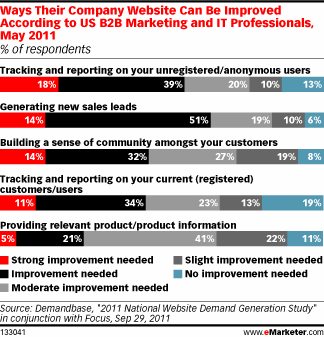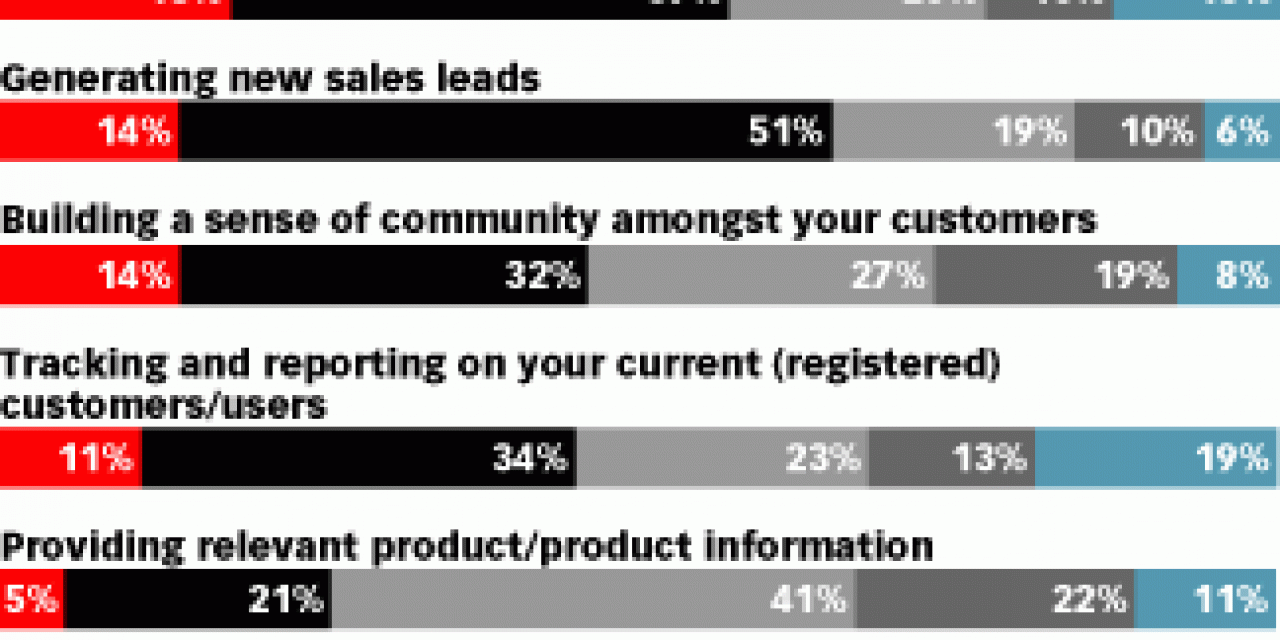
Your business’ website is a key resource that potential customers use to find information about a product or service they are thinking about buying. The content, user-centricity and consistency of your website obviously are all vital to attract visitors (by focusing on what they are looking for) and to convert a visitor into a lead or customer.
According to research, B2B marketers say their corporate website is a top lead source, just behind referrals and personal connections. Of course, this doesn’t mean other sources such as blogs couldn’t rank higher if they were used (better), but facts are facts: your website matters a lot. So it seems quite obvious to improve the efficiency of it even more, doesn’t it? Luckily most marketers agree. 84% of B2B marketers and IT professionals believed that they could improve their number of leads by upping the quality of their websites.
Successful websites: our viewpoint or that of the visitor?
The quality of a website can be defined in many ways. According to the research, 18% felt that strong improvement was needed in tracking and reporting unregistered/anonymous users of their websites. Thirty-nine percent felt this area merited improvement.
Also, 14% felt that strong improvement was needed in building a sense of community among their customers. 11% said that tracking and reporting on their current, registered customers and users was an area that needed strong improvement as well. Finally, five percent felt that their sites needed strong improvement in providing relevant product information.
The quality of leads was the most important performance indicator for measuring website effectiveness. Visitors and sales came in second and third place, at 22% and 21% respectively. The quantity of leads was the fourth most important indicator at 9%, and page views was the fifth most important at 8%. So, it seems that respondents do put quality above quantity.

However, there is no mention about user-centric performance indicators, the customer experience, customer satisfaction, the time it takes a visitor to find the information he seeks etc. We define success from our viewpoint, not from that of the visitor. I bet if we would do both, we would have better results overall.
Looking at what visitors need makes your website an even better top lead source
A more striking finding is that, although the respondents put quality above quantity to gauge success, they mainly measure…quantity. 65% tracked the number of visits a visitor has made to their website, far more than any other website “metric”.
The ways to generate more leads and increase conversions via websites are more or less known by now.
Although generating more leads through the corporate website ranked much higher than providing relevant product information, we might want to rate the success and efficiency of our websites in other ways than just looking at quality of leads (and certainly than merely looking at quantitative metrics).
And that is by putting relevant content and information higher on our priority lists, looking at the success of websites from the visitor perspective instead of only our viewpoint, and focusing on making our websites better, simply by optimizing every detail to make it easier for visitors to find what they are looking for. If you can’t achieve the latter, there is little sense in “building a sense of community”.
It is simple: you can always do much better if you look at what visitors need. It makes your website an even better top lead source.






